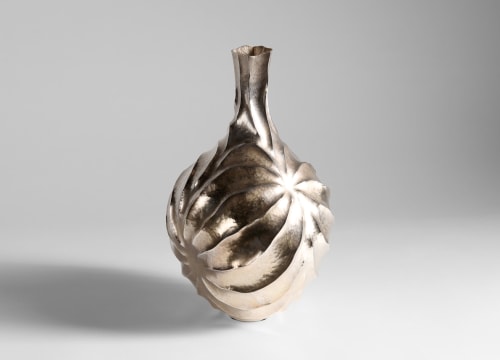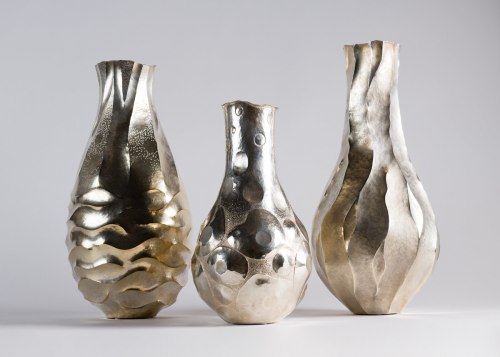

Considered one of the finest silversmiths in South America, Emiliano Céliz was born and raised in Córdoba. His creative instincts and interest in craftsmanship were fostered early on by his father and maternal grandfather; and he credits the Domingo Zipoli Children's Choir School for giving his first taste of “harmony.”
After earning his Bachelor of Biological Sciences, Céliz spent 15 years traveling his country before settling in the mountains of the city of his birth. There, he traded in his work in the sciences for that of a craftsman. Self-taught in traditional silversmithing, he quickly ventured into a varied practice in search of a more direct and expressive manner. Taking advantage of the malleability of silver and copper, he began "stretching" his materials into “free” shapes, producing vases and containers in a style that more fully reflects his admiration for creation.
In 2003 Céliz moved to San Martín de los Andes with his family, where he has remained and practiced his craft ever since. He takes as his inspiration the splendor of these natural surroundings, incorporating the forms found in the beautiful lakes and the exquisite landscapes of the countryside into his work.
Céliz begins each piece with an idea (rather than sketches) and in the making of it discovers his final design. More incredible still, his decorative artworks are often wrought from a single plate of copper or silver, a technique mastered by only a few artists in the world. The result is a collection of objects closer to the sculptural than to the utilitarian, adding art to the artisanal and revealing new possibilities for renowned Argentine silverware.
Artist Statement:
"Alchemizing the stone with fire, hammering and tapping, I forge the metal. Trying to persuade her gently, encouraging her into shape with my hands—it is an attempt to create. I imitate: the flowers, the waves of the wind, the blossoms, the mighty dance of life! I start by edging with steel; sparkles, textures, and shades are born. As bright as dawn, silver comes to shine.”
